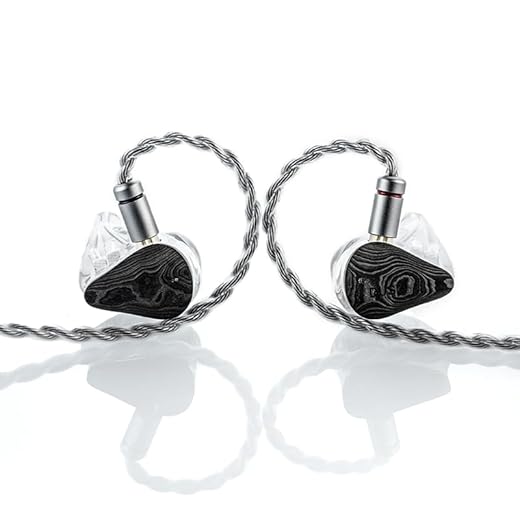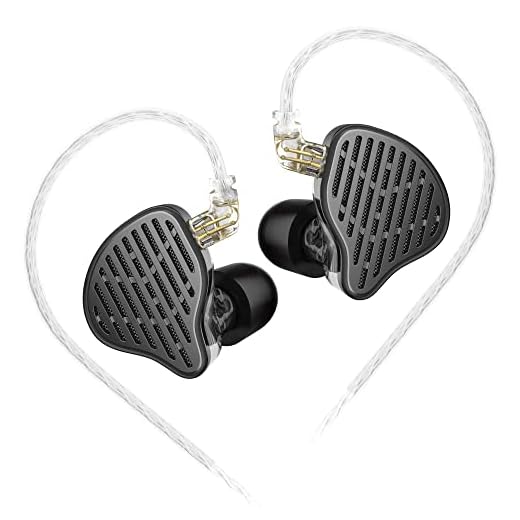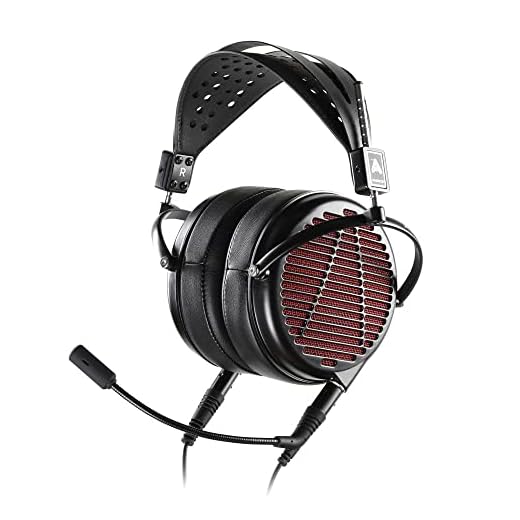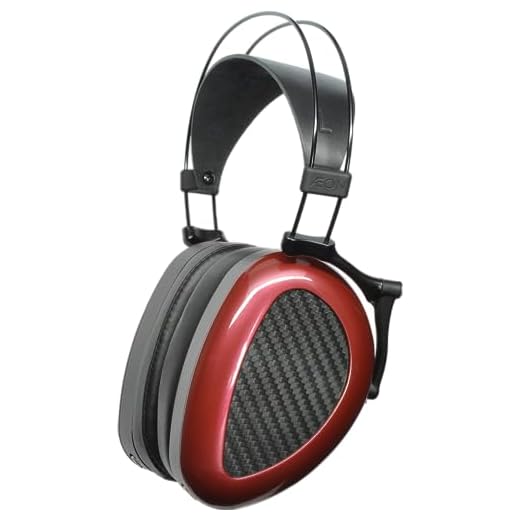In the world of in-ear monitors (IEMs), planar magnetic designs occupy a curious space—neither mainstream nor niche, but quietly revolutionary. For listeners who seek not just sound but presence, not just detail but texture, planar magnetic IEMs offer a kind of sonic fidelity that feels less like reproduction and more like revelation. This post explores what makes planar magnetic IEMs uniquely compelling, especially in contrast to dynamic and balanced armature (BA) drivers. It’s a meditation on need—on what planar setups fulfill that others cannot—and a celebration of listening as an act of emotional and technical discernment.
🌌 Uniform Force, Uniform Emotion
At the heart of planar magnetic design lies a principle of elegant physics: the diaphragm moves as a unified surface, suspended between magnetic fields and energized by a conductive trace. Unlike dynamic drivers, which push from a central coil, or BAs that pivot like miniature levers, planar diaphragms respond to force evenly across their entire surface. This uniformity minimizes distortion and preserves the integrity of complex musical passages.
The emotional result is striking. With planar IEMs, sound doesn’t feel like it’s being pushed toward you—it feels like it’s already there. Present. Effortless. Especially in genres that rely on subtle layering—Irish folk, ambient textures, or live Fillmore recordings—planar IEMs offer a kind of sonic transparency that feels like stepping into the mix rather than observing it from afar.
Recap:
- Even force across diaphragm = less distortion
- Sound feels present, not pushed
- Ideal for layered, intimate genres
⚡ Transient Speed Without Harshness
Transients—the attack and decay of notes—are where music breathes. They shape rhythm, emotion, and realism. Planar magnetic IEMs handle transients with remarkable speed and grace. Dynamic drivers may blur these moments, and BAs can over-articulate them, creating a sense of artificial sharpness. Planars, by contrast, deliver fast transients with natural decay, preserving the emotional arc of each note.
This trait is especially vital in live recordings, where the room’s breath and the performer’s nuance are part of the music’s soul. With planar IEMs, you don’t just hear the note—you feel its arrival and departure as part of a continuous, organic flow. It’s the difference between watching a candle flicker and feeling its warmth.
Recap:
- Fast transients with natural decay
- Avoids harshness or smearing
- Preserves emotional nuance in live recordings
🧵 Microdynamics and Texture
Where dynamic drivers offer punch and BAs deliver detail, planar magnetic IEMs reveal texture—the grain of a bowed string, the breath behind a vocal, the subtle friction of fingers on frets. This ability to render microdynamics—the tiny shifts in volume and tone that make music feel alive—is what sets planars apart.
They don’t just reproduce sound; they illuminate its inner contours. For listeners who seek emotional intimacy and sonic realism, especially in acoustic or vocal-heavy genres, planar IEMs offer a kind of tactile fidelity that feels like touching the music itself. It’s not just about hearing—it’s about sensing.
Recap:
- Reveals texture and microdynamics
- Ideal for acoustic and vocal intimacy
- Makes music feel physically present
🧭 Phase Coherence and Imaging
Planar magnetic IEMs often exhibit superior phase coherence, thanks to their diaphragm’s unified motion. This coherence translates into precise imaging—the ability to locate instruments and voices within a soundstage. You don’t just hear a guitar; you sense its position, its distance, its relationship to the vocal.
Dynamic setups may bloom, and BAs may dissect, but planars map the soundstage with poetic precision. This spatial clarity enhances immersion, especially in live or orchestral recordings where placement matters. It’s the difference between listening to a performance and attending one.
Recap:
- Unified diaphragm motion = better phase coherence
- Precise imaging and spatial clarity
- Enhances immersion in live or orchestral recordings
🧘 Aesthetic Philosophy: Minimalism in Motion
Beyond technical traits, planar magnetic IEMs embody a minimalist ethos. Their design reflects a commitment to simplicity and elegance—fewer moving parts, more intentional physics. This aligns with a broader philosophy of restraint: choosing gear not for excess, but for clarity.
In this sense, planar IEMs aren’t just tools—they’re philosophical companions. They invite a kind of listening that values nuance over novelty, presence over punch. For curators and creators alike, they represent a return to essentials—a reminder that fidelity isn’t about more, but about less interference.
Recap:
- Minimalist design with elegant physics
- Reflects editorial restraint and intentionality
- Encourages nuanced, presence-focused listening
🔌 Pairing Rituals: Synergy and Setup
Planar magnetic IEMs often benefit from thoughtful pairing. Their low sensitivity and impedance characteristics mean they thrive with clean, powerful sources—DACs and streamers that offer headroom and tonal neutrality. Eversolo models, for instance, provide a compelling match, especially when paired with high-quality cables and restrained EQ.
These setups become rituals: selecting the right gain setting, choosing a cable that complements the IEM’s tonal profile, and allowing the gear to disappear into the music. It’s mise en place for the ears—a preparation that honors the listening act as a form of hospitality.
Recap:
- Requires clean, powerful sources
- Benefits from thoughtful cable and gain choices
- Listening becomes a ritual of preparation
📜 Historical Context and Evolution
Planar magnetic technology has long been revered in full-size headphones, but its migration to IEMs is relatively recent. Early models like the Audeze iSINE series paved the way, followed by breakthroughs like the 7Hz Timeless and Raptgo Hook-X. These designs proved that planar fidelity could be miniaturized without losing its soul.
This evolution reflects a broader shift in audio culture—toward portability without compromise, intimacy without isolation. Planar IEMs are part of that movement, offering listeners a way to carry sonic truth in their pocket.
Recap:
- Planar tech migrated from full-size to IEMs
- Key models: Audeze iSINE, 7Hz Timeless, Hook-X
- Reflects shift toward portable fidelity
🎧 Listening Invitations: What to Hear
To truly appreciate planar magnetic IEMs, one must listen with intention. Seek out tracks that reveal their strengths—cymbal decay, vocal layering, ambient textures. Mary Chapin Carpenter’s live recordings, for instance, offer moments where breath, space, and phrasing come alive through planar clarity.
Create a playlist that invites exploration. Include acoustic sets, ambient compositions, and live performances. Let the IEMs guide you—not just through sound, but through silence, through space, through the emotional terrain between notes.
Recap:
- Listen for decay, layering, and ambient space
- Ideal genres: acoustic, ambient, live recordings
- Use playlists to explore emotional terrain
🪞 Conclusion: Fidelity as Philosophy
Planar magnetic IEMs are more than a technical achievement—they’re a response to a deeper listening need. They fulfill what dynamic and BA drivers often cannot: a sense of sonic presence, emotional texture, and spatial coherence. They invite restraint, reward intention, and reflect a philosophy where fidelity is not about volume or detail alone, but about the alignment between sound and soul.
For curators, creators, and listeners alike, planar IEMs offer a kind of editorial clarity—a way to hear not just what’s recorded, but what’s meant. They are proof that in the quiet tension between engineering and emotion, something beautiful can emerge. Something planar. Something true.












